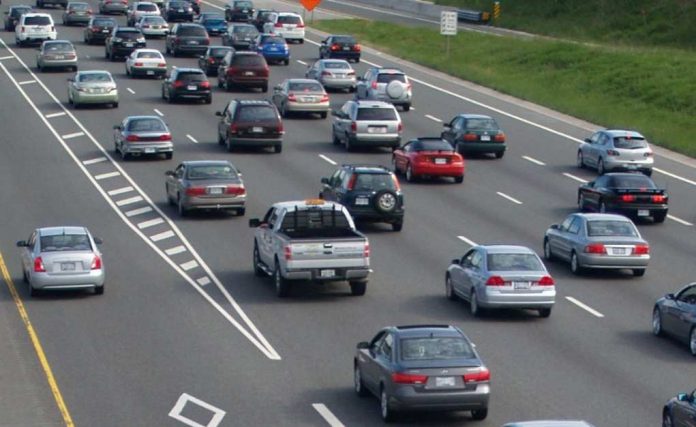
Getting stuck in traffic is the worst.
But while most Americans are worried about the amount of time they lose sitting in traffic there’s secretly a much bigger cost they’re paying.
And now the steep price American taxpayers are paying for traffic congestion will make you sick to your stomach.
New York City named worst city in the world for traffic congestion
It’s summertime and that means long road trips to our favorite destinations.
But this year, there’s one American city that you might want to avoid — Democrat-controlled New York City.
INRIX, a global research firm that focuses on managing traffic in cities around the world, just released its 2023 Global Traffic Scorecard, which rates how each city measures up.
According to the report, 8 of the top 10 cities for traffic delay in North and South America, and 4 of the top 10 cities in the world, can be found in the United States.
The Big Apple, unsurprisingly, earned the number one spot.
The report is based on “three years of mobility data,” including sensors found on the road and in vehicles.
The group includes “the most-up-to-date post-COVID travel patterns to truly analyze and compare how commuting differs” from city to city.
American travelers lost over $70 billion from gridlock in 2023
The report found that the average driver in New York City spent over 100 hours stuck in traffic jams in 2023.
The next highest cities were London with 99 hours, Paris with 97 hours, and Mexico City with 96 hours.
But the report doesn’t just assess lost time – it also looks at the economic impact.
According to INRIX, slowed commute times can impact things like “freight delay, inflationary pressure, and environmental impact. . .”
The group says that it can successfully quantify how much each hour costs travelers.
Travelers in the New York City economy lost over $9.1 billion dollars due to the congestion.
And the cost to American travelers overall amounted to more than $70 billion.
“Traffic congestion is both a bane and a barometer of economic health; it symbolizes bustling activity yet simultaneously hampers it,” INRIX analyst Bob Pishue said in comments to Bloomberg.
Experts are looking for solutions to traffic woes
New York City has been looking for solutions to the burgeoning traffic problems downtown.
City planners have proposed a tolling program that would charge personal commuters $15 per day to drive in Manhattan below 60th St.
Delivery trucks and commercial vehicles would pay up to $36 based on their size.
New Yorkers were obviously furious about the proposed plan, and Democrat Governor Kathy Hochul ultimately decided that it is “not the right time” to add more tolls to New York commutes.
INRIX data suggests that a shift towards “micromobility” could also ease congestion in major cities.
According to the U.S. Federal Highway Administration, micromobility is the use of “any small, low-speed, human, or electric-powered transportation device.”
The Global Traffic Scorecard highlights the rise in popularity of micromobility vehicles. “The latest trends reveal micromobility use across all cities monitored increased by 8.3% between 2022 and 2023,” it says.
These alternate forms of transportation would shift traffic from the road to sidewalks and other paths.
US Political Daily will keep you updated on any developments to this ongoing story.












